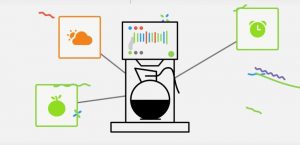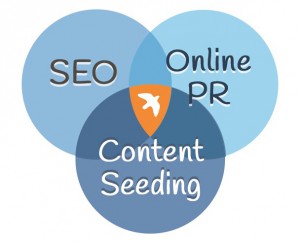A GPS unit that provides a general sense of direction based on landmarks (“turn left at the train station, head South after the statue of the town mascot”) could feasibly get you from point A to point B. But if you want to cut the confusion, speed up your journey and create an overall less stressful experience for both you and your passengers, you want a smarter GPS unit. One that integrates clear directions with real-time data about road construction, traffic jams, tolls, and alternative route options. It’s a no brainer. It’s the same for contact center reporting. Reporting that provides a transparent window into your contact center data helps you gain actionable insight that can differentiate your customer experience and boost your bottom line.
First Step: Smart Forecasting
Reporting on Average Handle Times and Average Speed of Answer, as well as other key metrics, is standard in contact center reporting. Those metrics are important, but understanding how to act on that insight is vital. In particular, it will help your call center establish smarter volume forecasting.
Understanding your peaks, valleys, and seasonal or situational volume trends is the essential first step in leveraging your workforce to effectively meet KPIs. This requires breaking down the data into interval, daily, weekly, monthly, and annual reports to identify patterns and cross-referencing that information with historical data. Furthermore, cross-collaboration with departments like tech, sales and marketing will allow you to take into account technical updates, promotions and sales that will impact volume.
Finally, aligning these patterns with your KPIs and customer service performance allows you to make more informed decisions about workforce management. The cherry on top is real-time analysis of forecasted versus actual volume, allowing you to adjust and optimize your agent workforce as necessary.
Second Step: Improving Customer Experience
If smart forecasting is the foundation, this is the gold. Contact center reporting digs into the mountains of previously unstructured data and uncovers insight that drives decision-making. And those decisions often make a huge impact on customer experience. A data-driven
When you integrate contact center big data tools and resources like contact reason tracking, quality monitoring, customer satisfaction surveys, social analytics, and more, you can more easily pinpoint root cause for difficult calls, unhappy customers, and disrupted workflow processes. Essentially, you gain the customer perspective; you start to understand not only what happened by why it happened. Even better, you begin to see not only why it happened, but how to prevent it from happening again.
Correlations between KPIs and agent traits, for instance, provide key insight into how your agent profile impacts customer experience. Such a correlation would allow you to determine if First Call Resolution is more likely to occur with agents who are more analytical or more empathetic. It will help you determine how to adjust workflow processes to more effectively respond to customers who’ve complained over social media (perhaps by sending them directly to a frontline agent rather than dragging them through your IVR system). You’ll be able to more quickly identify which agent traits lead to happier customers, or which key phrases the agent uses that lead to better FCR rates or improved customer loyalty. Ultimately, these are insights that drive powerful decision-making about hiring profiles, training programs, workflow processes and more.
Third Step: Boosting Your Bottom Line
At Blue Ocean, we’re all about differentiated customer experience. Our number one goal is to enhance your relationship with your customers each and every time they interact with the contact center. Customers drive your business, and their experience with customer service will drive their loyalty. But we know that’s not the only element of your business that fuels your decision-making. What about the bottom line?
That’s where contact center reporting can provide key insight to drive down your costs and boost your revenue. For example, when you can use your data to determine how to increase First Call Resolution, that action will impact your call volume, reducing the occurrence of second- or third-time callers. Lower volume equals reduced staffing needs, which equals lower costs. The same is true for decreasing Average Handle Time. No matter which way you look at it, when smarter contact center reporting provides actionable insight, the result is greater ROI on your contact center costs, reduced cost per call and increased customer loyalty – three key influencers on your bottom line.
At the end of the day, contact center reporting shouldn’t be done for the mere sake of procedure. It should be the key driver in decision-making, providing valuable insights into how you can better engage your customers and boost your bottom line.
Business & Finance Articles on Business 2 Community(22)
Report Post




